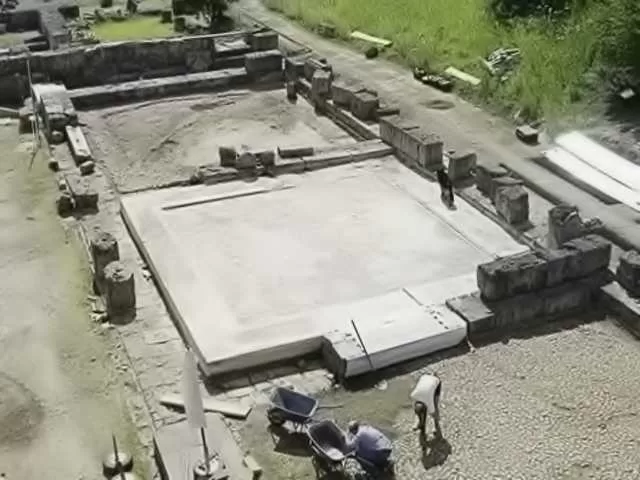In a momentous occasion marked by a 16-year restoration project costing over 20 million euros ($22 million), the grandeur of classical Greece comes to life at the fully reopened Palace of Aigai in northern Greece. This monumental structure, the largest building of its kind in classical Greece, holds a rich historical legacy as the place where Alexander the Great was proclaimed king before embarking on his legendary conquests, stretching as far as modern-day Afghanistan.
Constructed over 2,300 years ago during the reign of Phillip II, Alexander’s father, the Palace of Aigai served as the royal capital of Macedonia—a kingdom transformed into a dominant military power of ancient Greece. Prime Minister Kyriakos Mitsotakis, speaking at the inauguration event on Friday, emphasized the global significance of the meticulous restoration, calling it an event of paramount importance.
Spread across a sprawling 15,000 square meters (160,000 square feet), the palace featured column-rimmed courtyards, places of worship, spacious banquet halls, and courts, with its floors adorned in patterned marble and intricate mosaics. The distinctive architectural layout, resembling two adjoining square donuts of unequal size, made the Palace of Aigai the administrative and spiritual nucleus of the kingdom. The palace remains, along with nearby royal tombs, have been designated as a United Nations World Heritage Site in the vicinity of the modern village of Vergina.
The restoration process was akin to assembling a three-dimensional jigsaw puzzle, as marble columns were meticulously reconstructed by piecing together original stones from the ruins with carefully crafted replica replacement parts. This endeavor not only recaptured the physical essence of the palace but also showcased the architectural prowess of ancient Macedonians.
Aigai, situated 65 kilometers (40 miles) southwest of Thessaloniki, garnered international attention in the late 1970s during burial mound excavations. Archaeologist Manolis Andronikos led these excavations, unearthing royal tombs containing a gold casket, gold artifacts, and bones believed to belong to Philip II. These discoveries highlighted the sophistication of Macedonian culture, often overshadowed by the historical focus on Athens.
Angeliki Kottaridi, a key figure in the project, joined as a young assistant during her university years and dedicated her life to the excavations. Her efforts culminated in the opening of a new museum at Aigai a year ago, complementing the palace restoration. Kottaridi, honored at the ceremony, remarked on the joy of the researcher, stating that it is not just the moment of revelation but the realization that knowledge can be advanced.
The meticulously restored Palace of Aigai, a testament to ancient splendor, will open its doors to the public on Sunday, inviting visitors to immerse themselves in the rich history and architectural brilliance of Macedonia’s royal past.

